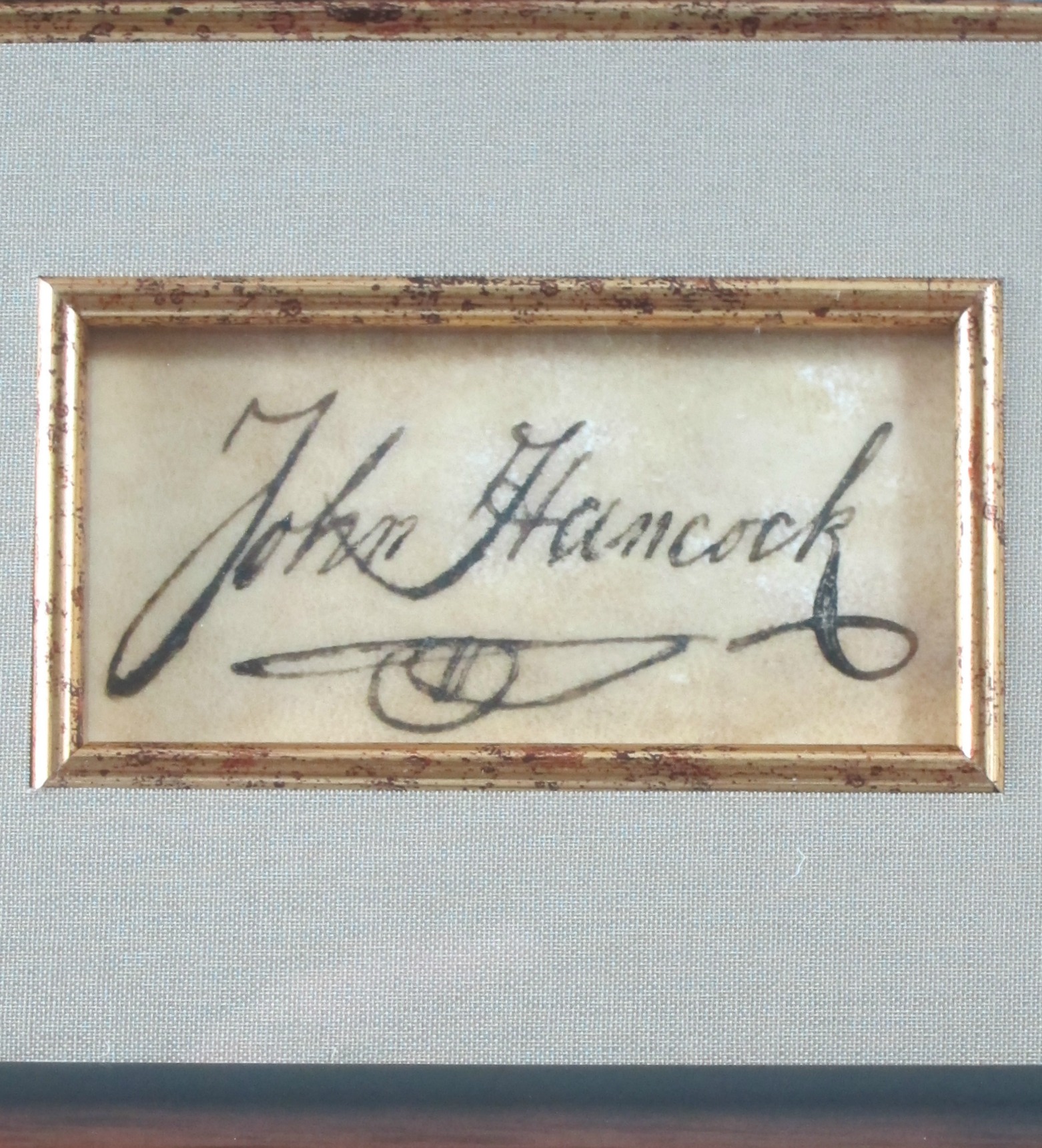


But he played a key role in his state’s ratification of the Constitution, when he overcame his own objections about the lack of a Bill of Rights to urge its passage.HANCOCK, John, a Delegate from Massachusetts born in Quincy, Norfolk County, Mass., Janupursued classical studies was graduated from Harvard College in 1754 a selectman of Boston several terms member of the provincial legislature 1766-1772 president of the Provincial Congress in 1774 Member of the Continental Congress 1775-1778 and served as President of the Congress from May 24, 1775, to October 1777 first signer of the Declaration of Independence served as senior major general of Massachusetts Militia during the Revolutionary War member of the Massachusetts constitutional convention in 1780 Governor of Massachusetts 1780-1785 was again elected President of the Continental Congress on November 23, 1785, but resigned May 29, 1786, not having served on account of illness again Governor of Massachusetts from 1787 until his death in Quincy, Mass., Octointerment in Old Granary Burying Ground, Boston, Mass. John Hancock was a signer of the Declaration of Independence and one of the most famous figures in American history. The Signature Room at the 95th, Chicago Picture: John Hancock Signature Room, view from 95th floor - Check out Tripadvisor members 2087 candid photos and. Hancock had health issues by 1787 and wasn’t in the Massachusetts delegation. Hancock wasn’t at the Constitutional Convention in Philadelphia. He was immensely popular in his home state.ĩ. Hancock was elected in 1780 to lead his state and was its governor for most of the remaining years of his life. He was the longtime governor of Massachusetts. But a homesick Hancock left Congress in 1777 to return to Massachusetts.Ĩ. Hancock raised money for the Revolution, he helped secure troops, and he played a role in getting naval forces organized. Hancock was a behind-the-scenes force early in the American Revolution. And his arrest was ordered by the British after the battles.ħ. Hancock had to be talked out of taking the battlefield against the redcoats. The British troops that set out to Lexington and Concord in 1775 may have been hunting for Hancock and his friend, John Adams, as well as for military supplies that were stored for militia use. He riled up the crowd with a famous statement: “Let every man do what is right in his own eyes.”Ħ. He wrote his signature in large clear letters, the first person to sign the document. The first published version is known as the Dunlap broadside and was signed only by John Hancock who was the president of the Continental Congress and Charles Thomson its secretary. John Hancock, on the other hand, was one of the original signers of the Declaration of Independence, and served as President of the Second Continental Congress. While Hancock wasn’t on a ship tossing tea overboard, he was at meetings when outrage was vented at the British. Was John Hancock’s signature too big We hold this truth to be self-evident: John Hancock’s signature on the Declaration of Independence was too big.

2 The feedback file from John Hancock to your payroll vendor contains actionable payroll change information, such as deferral and loan repayment deduction changes. 1 The payroll and data file from your payroll vendor to John Hancock contains contributions, loan repayments, and participant-indicative data. Hancock also had a role in the Boston Tea Party incident. Payroll 360º uses two digital file paths for data integration. John Adams got Hancock off the hook from the smuggling charges.ĥ. The suspicions led the British to seize Hancock’s ship, Liberty, which started a riot. John Hancock, smuggler? Well, he may have been an importer, too, but goods like tea that arrived in New England on Hancock’s ships may have escaped paying a duty. Instead, he sympathized with people like John and Samuel Adams, who were patriots.Ĥ. With his wealth and social standing, Hancock should have been a leading member of an elite group that didn’t want independence. Hancock should have been a Loyalist, but he wasn’t. He was also a quick learner in the business world.ģ. Young Hancock graduated from Harvard at the age of 17. In fact, Hancock may have been the richest man in New England when he inherited a shipping fortune.Ģ. He was from Massachusetts and his family had money, which he inherited when his uncle died. Here are 10 facts about the man whose name is now synonymous with impressive signatures.ġ. A little more than a year later, Hancock was the first to sign the document declaring independence. On May 24, 1775, Hancock was named as the presiding officer over the Second Continental Congress, which was meeting in Philadelphia to discuss the military threat posed by the British. But how much do you know about the former president of the Continental Congress? John Hancock and his signature are two of the best-known elements related to the Declaration of Independence.


 0 kommentar(er)
0 kommentar(er)
